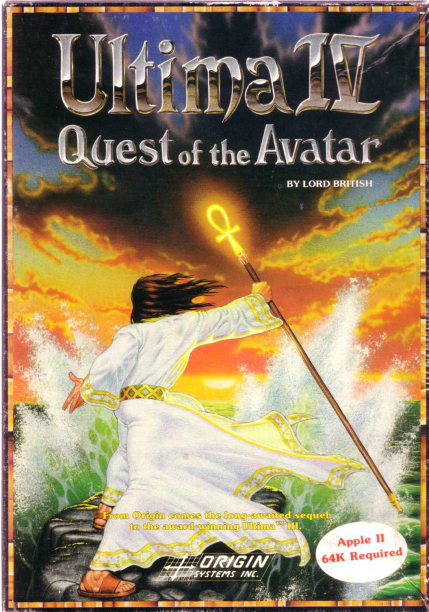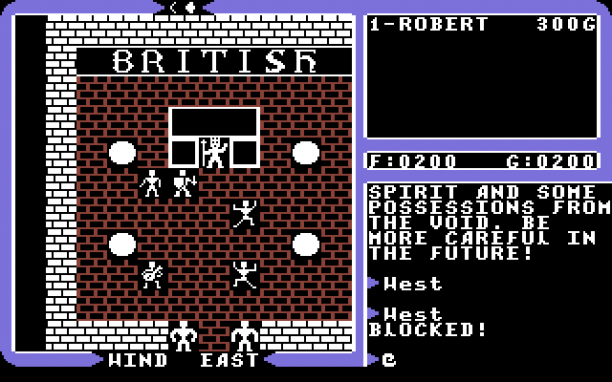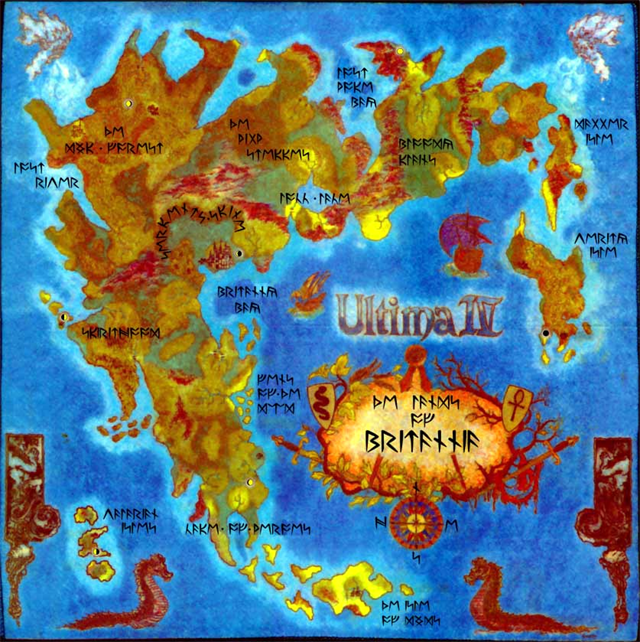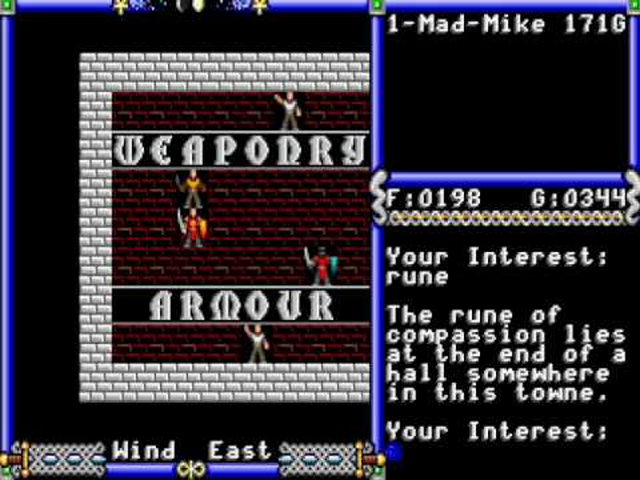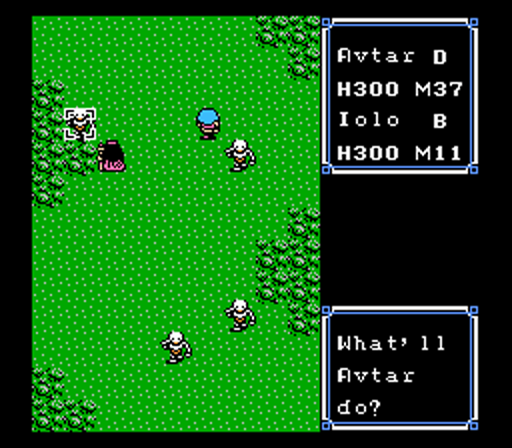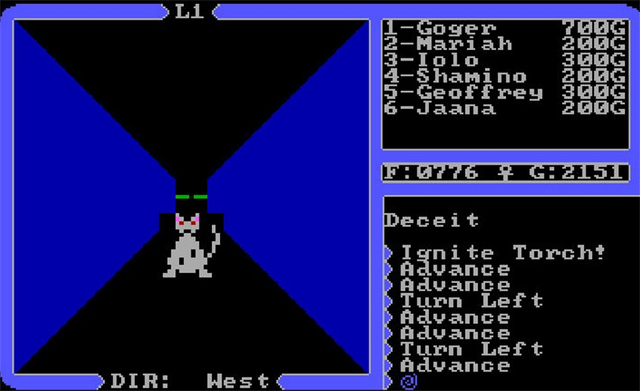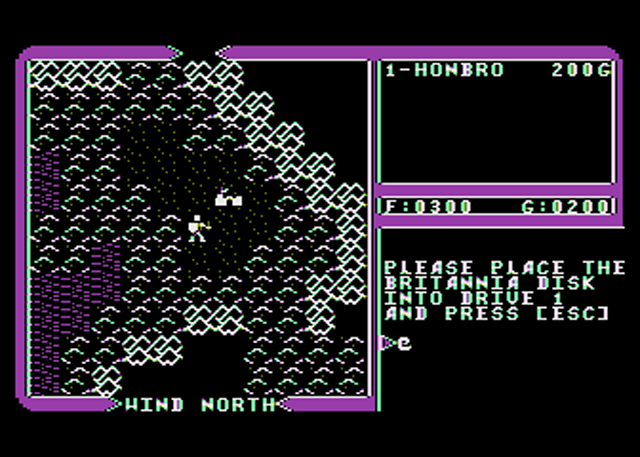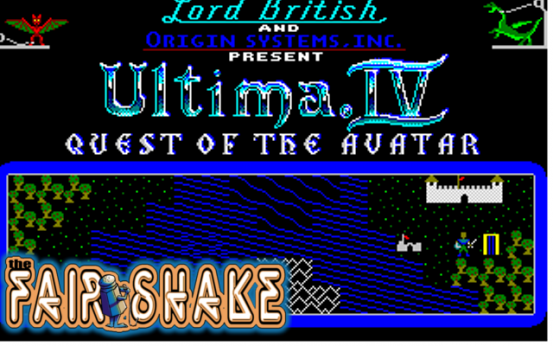
The Fair Shake
Ultima IV: Quest of the Avatar
Greetings Readers! Carl has stepped through a magical moongate and is in the land of Britannia. Not entirely sure what to do, a gypsy beckons him to choose his path, and mentions he will become the Avatar. Welcome to Ultima IV.
Ultima IV: Quest of the Avatar was released in 1985 for almost every major computer of the time. The game went on to be one of the best selling games of the 1980s .It was groundbreaking as it differed from most other RPGs that had a set goal of “kill Beast X and save Kingdom Y using Ultimate Weapon Z”. Ultima begins quite open ended, and to put it simply, is a game more about the journey, than the conclusion. The game opens with your character outside of a city and you asking “OK… now what?”
“Now what” will end up dragging you into a thoroughly engaging world.
There really isn’t enough space in this column to fully describe Ultima IV, so I’ll give a brief overview. The game starts with you choosing your class (unknown to you at the time) by some questions from a gypsy. Depending how you answer, that’s your class (Fighter, Paladin, Ranger, and so on). Some have spell casting ability while others do not. All playable classes are human in this Ultima. Your ultimate (ha) goal is to become the Avatar, by mastering the eight virtues of Britannia. The what?
In Ultima IV, your quest is to be the living embodiment of the eight virtues. (Honesty, Valor, Justice, Humility, Compassion, Spirituality, Sacrifice, and Honor) That is, you can’t stroll about the world being Billy Badass. It’s not honest to steal, it shows compassion to let a fleeing creature escape. If you must flee, you should be the last to flee. Donate to the poor when you see them. There is a mystic seer in Castle Britannia that ‘sees’ your rating in each virtue. As the game progresses, you’ll need to go pray at various shrines representing each virtue, but before you can enter, you need a rune, or a small stone, which matches each shrine. There are lots of dungeons, cities, and towns to explore, as well as NPCs you meet that may want to join you on your quest.
If you are a fan of tile based JRPGs, you’ll feel right at home. Arguably, Ultima I – III started the ’tile based’ appearance of many JRPGs. It’s difficult to describe these grahics as there have been so many releases. The original release was EGA with some animated tiles for all characters and monsters. The VGA update is actually really nice to look at, while the NES version has a feel similar to Final Fantasy, but slightly more ‘cartoony’ in nature. The screen is divided into three sections with the left being a top down view focusing on your character (your party is represented by your sole character, similar to Final Fantasy 1), with vital statistics and a command prompt of sorts making up the right side of the screen.
Being an 80s game, control is allllll keyboard. Arrow keys move, while every letter has a purpose (A attacks, T talks, C casts a spell, that sort of thing). For you WoW fans, this does take a lot to get used to. Battle can get to be a little clunky as you recruit up to 8 more companions as you must control each one individually from a top-down perspective. They can escape the battlefield if wounded and even accidentally attack each other. Battle and movement are turn based, so even a battle versus a lonely orc can take eight turns to move your teammates one tile. (Solution: Don’t have the other people join you until you are ready for the last dungeon.) Conversation with NPCs is simple one word typed responses (try “Name” and “Job” to get a conversation going with people).
The DOS/PC version originally had no music, while the Apple II version has an amazing score, which you can hear if you have a Mockingboard. There are mods that mix and match graphics and music for the PC, (Xu4 comes to mind). If you’re wondering where that wonderful song “Stones” is… it’s not here. Sorry, that’s Ultima V, but it is worth going to listen to.
No seriously, I’ll wait.
Other than the absence of Stones, there are some minimal combat sound effects and a tap-tap of feet as you walk around, but don’t expect much more than that.
I’m sometimes asked what is my favorite RPG game or series. My answer is Ultima. Richard Garriott, aka Lord British (You may have heard he went to space a few years ago… that guy), created an amazing world full of wonder, friends, and foes all of whom you interact with. Many future titles in the Ultima series are set in Britannia, with the others at least relating to it in some way. Ultima IV always felt very open ended, not caring too much ‘how’ you get there, as long as you do. I’ve left out a lot, like moongates, spell reagents, the dungeons, but that’s for you to find as you explore. Sail the seas and head to Buccaneer’s Den! Take in the sights of Britannia. Find the hot air balloon and ride the winds! Whatever you do… don’t use the Skull of Mondain! (who?)
With various releases both past and present, and with the official version released free (thanks EA!), there’s no reason anyone can’t play it as the documentation is all on the internets. The game is about a personal journey, which in the world of gaming, retro gaming especially, is very rare. Are you ready to embark on it, a real gem of a CRPG game? No quests with question marks over the quest givers head here. You’re on your own to explore. Become the Avatar, and give Ultima IV the fair shake.
